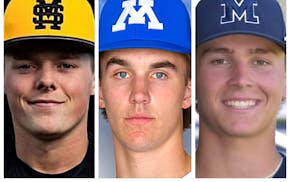In late March, Vikings defensive tackle Harrison Phillips and fullback C.J. Ham stood in front of a group of over 100 flag football players gathered at the team's training facilities in Eagan for a flag football media day. Microphones in hand, the pair bounced back and forth, fielding questions from the high school student-athletes on everything from their pregame routines to their college years.
The girls who crowded around, seated on the turf, could pocket the advice for their own football careers which, for most, were just beginning.
On Sunday, 51 high school teams will kick off Minnesota's most widespread push for flag football yet. Sponsored by the Vikings, the expanded league builds upon a four-team trial that ran last summer.
After deeming the pilot season a success, the Vikings' organizers began reaching out to athletic directors across Minnesota. If the school could rally a team, the NFL franchise would provide uniforms and funding — $600,000 in total.
Esther Aminga, a senior at Richfield, thought the email sent to the student body was a joke. A manager on the school's tackle football team and cheerleader, Aminga had wanted to try flag football since seeing an NFL commercial highlighting the sport during the Super Bowl.
"I didn't believe for two days straight. I was like, cut the joke," Aminga said.
But instead of a joke, it was a new reality, and a new fast-growing sport, popping up across the state.
Growing the league
When Minneapolis North announced it would have a flag football team this spring, sophomore Taylor Pettis already knew she wanted to be its quarterback.
Last year, when North pitted each of its grade levels against one another in an annual Powderpuff girls flag football event, Pettis led the freshman team to a win.
"I have a good arm," Pettis said matter-of-factly.
Around 30 girls joined Pettis in coming out for North's first practices.
"We didn't expect that many girls to want to play flag football at all," Pettis said. "But asking around, everyone was like, 'Oh yeah, we're going to do it.' "
Like Pettis, a handful of the league's players have previous football experience from district flag football leagues or P.E. class. Players from Rosemount — last year's pilot-league champ — grew up competing in a summer flag football program put on by the tackle football team's coach, Jeff Erdmann.
"You know how [tackle] football games are. We all go there," Aminga said. "[Flag] is going to bring out a new community."
None of the players has competed in a league this far-reaching. This year's competition will sort teams into 11 districts with four teams each, plus a seven-team Minneapolis district. The top school from each district will compete in a 12-team state tournament June 9 at the Vikings' TCO Stadium in Eagan.
Even with a bigger league, the experienced Irish like their chances. Their entire roster returns, minus a handful of seniors.
"We've got some new tricks up our sleeves," sophomore Talia Vescio said with a knowing smile.
In Minnesota, Erdmann said he envisions a league with two 64-team size classifications, as early as next year.
At least 20 teams need to compete for two years in order for the Minnesota State High School League to classify a sport with "emerging" status, the first step in official league sanctioning — the Vikings' ultimate goal.
From the ground up
At the Vikings' flag football media day, high school players rotated through photo and social media stations — taking selfies, posing for portraits and answering questions on video like the pros.
But off to the side, Hopkins coach Rae Jefferson gave pointers to a group of players running routes on the turf.
The players weren't from Hopkins, but it didn't matter. As a former flag football player in Italy and a new member of the longstanding local women's tackle football team, the Minnesota Vixen, Jefferson has plenty of knowledge to share. So does assistant coach CJ Yang, who has been playing in a local Hmong flag football league for eight years.
"It really is just about paying attention to the rules that is such an underrated, valuable thing," Jefferson said. "Something so small makes a big difference in the game."
Jefferson is prepared to have to "teach the game at a foundational level" and has shown the Hopkins girls film from the U.S. Women's Flag National Team as an example of high-level flag. Other schools have started teaching the sport in P.E. in recent years or have added recreational after-school leagues.
That ground-up approach, to Erdmann, could be a plus, not a growing pain.
If a sizable portion of players are beginners — and not coming from robust club programs like in soccer, basketball and volleyball — that means the league could have more parity. The Vikings' $600,000 donation providing equipment, transportation and coaching stipends should also help level the playing field.
"I think we're going to see small schools beat big schools," said Erdmann, who also pointed to the 5-on-5 format as another factor. "There's not a lot of sports where that happens. … We're going to see some more metro schools that are going to beat suburb schools, and that's going to be fun."
Paving a pathway
In the fall, when laying the roadmap for the expanded league, the Vikings expressed desire for a pipeline that would shift girls' perception of flag football from a one-off Powderpuff opportunity to a well-resourced sports option.
They then put money behind their wish, sponsoring a six-team league of Upper Midwest Division II and III college teams that kicked off their first season in early April.
College coaches have sought out Rosemount's games on Hudl, and some Irish players expressed interest in new scholarship opportunities popping up in small college conferences across the country. But for other players, a major draw of flag is that, for now, it exists outside the youth-sports pressure cooker.
"So many sports now are dead-set on all this recruiting, and you have to be the top player," said Olivia Danner, a Rosemount sophomore who also plays basketball and soccer. "We all took [flag] serious because we wanted to win, so it's still competitive, but it wasn't to the point where you, like, hated it, and you're just doing it to do it."
When Phillips and Ham stopped by March's media day, Phillips asked the girls how many of them played other sports.
Most raised their hands, representing everything from hockey to volleyball to track — though the Vikings organizers hope that flag will, eventually, reach more girls not already participating in athletics.
In the spring flag season, teams will play Sunday doubleheaders, and some coaches said their teams will practice two to three times per week in the evenings to avoid conflicts with other spring sports. Should flag eventually earn MSHSL sanctioning, those logistics could change, forcing players to pick one spring sport.
But for now, "if they have a track meet, go to your track meet," said Minneapolis Camden assistant coach Rob Neumann. "If you have a softball game, go to [the] softball game. We want it to be as inclusive of as many people [as possible] while being respectful of the other sports."
Most coaches are aiming for at least a 20-player squad, but some schools have reported as many as 70 girls coming to tryouts, leading to junior varsity A and B squads being formed, additional games being scheduled and more uniforms and flags being ordered.
"I have younger brothers, so growing up, I've always played football and always wanted an opportunity to play, and I never really had one," said Rosemount sophomore Ava Casper. "So now this gives me an opportunity."
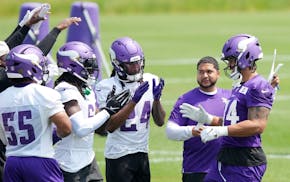
Tight end Josh Oliver, Vikings agree to terms on three-year contract extension
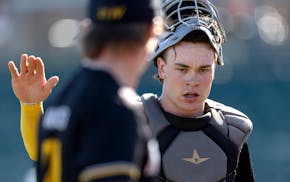
High school baseball state championships: A prediction for every step in every bracket
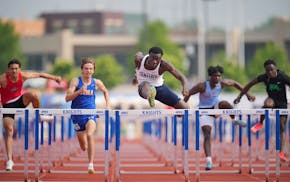
Live blog: Day 1 of high school track and field state meet at STMA
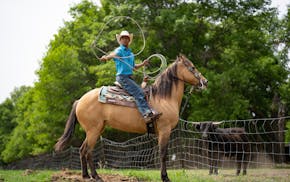
Staples-Motley athlete is a pole vaulter, rodeo cowboy, musician and, especially, an expert at mind control
